Top Rankings
Piedmont School District ranks among the top 20% of public school district in Oklahoma for:
Category
Attribute
Overall Rank
Highest overall rank (Top 10%)
Math Proficiency
Highest math proficiency (Top 20%)
Reading/Language Arts Proficiency
Highest reading/language arts proficiency (Top 10%)
Graduation Rate
Highest graduation rate (Top 5%)
Community Size
Largest student body (number of students) (Top 1%)
For the 2025 school year, there is 1 public preschool serving 615 students in Piedmont School District.
Public Preschools in Piedmont School District have a diversity score of 0.56, which is less than the Oklahoma public preschool average of 0.74.
Minority enrollment is 36% of the student body (majority Hispanic and Black), which is less than the Oklahoma public preschool average of 56% (majority Hispanic and American Indian).
Overview
This School District
This State (OK)
# Schools
7 Schools
821 Schools
# Students
5,327 Students
311,633 Students
# Teachers
283 Teachers
19,387 Teachers
Student : Teacher Ratio
19:1
19:1
District Rank
Piedmont School District, which is ranked within the top 10% of all 533 school districts in Oklahoma (based off of combined math and reading proficiency testing data) for the 2021-2022 school year.
The school district's graduation rate of 95% has increased from 89% over five school years.
Overall District Rank
#45 out of 538 school districts
(Top 10%)
(Top 10%)

Math Test Scores (% Proficient)
38%
25%
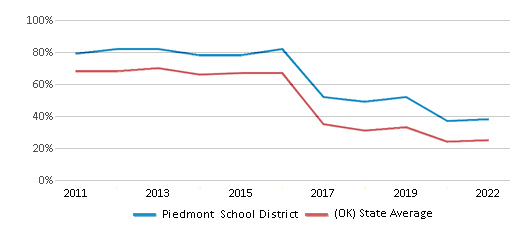
Reading/Language Arts Test Scores (% Proficient)
42%
27%

Science Test Scores (% Proficient)
40%
31%
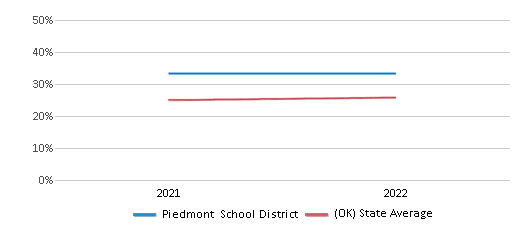
Graduation Rate
(20-21)95%
78%
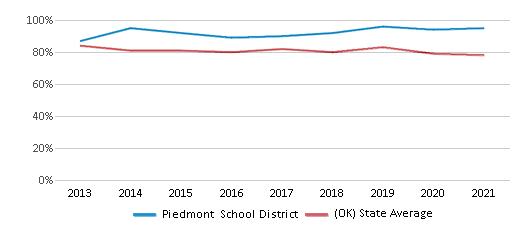
Students by Ethnicity:
Diversity Score
0.55
0.74
# American Indian Students
348 Students
34,190 Students
% American Indian Students
7%
11%
# Asian Students
163 Students
7,116 Students
% Asian Students
3%
2%
# Hispanic Students
646 Students
62,874 Students
% Hispanic Students
12%
20%
# Black Students
277 Students
25,340 Students
% Black Students
5%
8%
# White Students
3,479 Students
135,776 Students
% White Students
65%
44%
# Hawaiian Students
9 Students
1,341 Students
% Hawaiian Students
n/a
1%
# Two or more races Students
405 Students
44,922 Students
% of Two or more races Students
8%
14%
Students by Grade:
# Students in PK Grade:
283
37,955
# Students in K Grade:
332
46,984
# Students in 1st Grade:
375
45,889
# Students in 2nd Grade:
425
44,372
# Students in 3rd Grade:
353
41,579
# Students in 4th Grade:
416
37,550
# Students in 5th Grade:
422
31,634
# Students in 6th Grade:
443
10,304
# Students in 7th Grade:
361
7,534
# Students in 8th Grade:
400
7,832
# Students in 9th Grade:
399
-
# Students in 10th Grade:
415
-
# Students in 11th Grade:
349
-
# Students in 12th Grade:
354
-
# Ungraded Students:
-
-
District Revenue and Spending
The revenue/student of $8,102 in this school district is less than the state median of $10,983. The school district revenue/student has declined by 17% over four school years.
The school district's spending/student of $7,659 is less than the state median of $10,957. The school district spending/student has declined by 17% over four school years.
Total Revenue
$43 MM
$7,919 MM
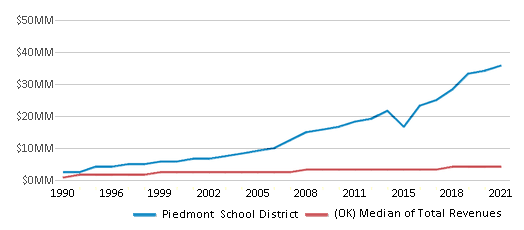
Spending
$41 MM
$7,900 MM
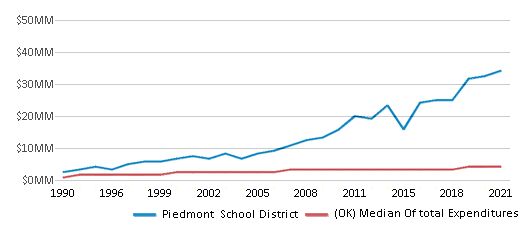
Revenue / Student
$8,102
$10,983
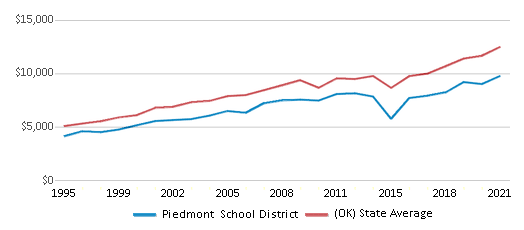
Spending / Student
$7,659
$10,957
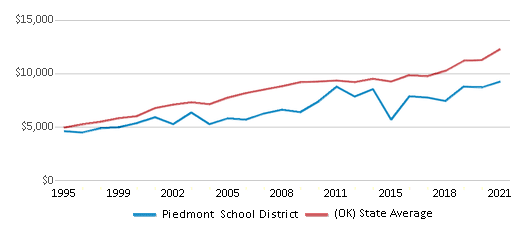
Best Piedmont School District Public Preschools (2025)
School
(Math and Reading Proficiency)
(Math and Reading Proficiency)
Location
Grades
Students
Rank: n/an/a
11020 W Memorial Rd
Yukon, OK 73099
(405) 373-5190
Yukon, OK 73099
(405) 373-5190
Grades: PK-K
| 615 students
Recent Articles

Year-Round Or Traditional Schedule?
Which is more appropriate for your child? A year-round attendance schedule or traditional schedule? We look at the pros and cons.

Why You Should Encourage Your Child to Join a Sports Team
Participating in team sports has a great many benefits for children, there is no doubt. In this article you will learn what those benefits are.

White Students are Now the Minority in U.S. Public Schools
Increasing birth rates among immigrant families from Asia and Central and South America, combined with lower birth rates among white families, means that for the first time in history, public school students in the United States are majority-minority. This shift in demographics poses difficulties for schools as they work to accommodate children of varying language abilities and socio-economic backgrounds.





